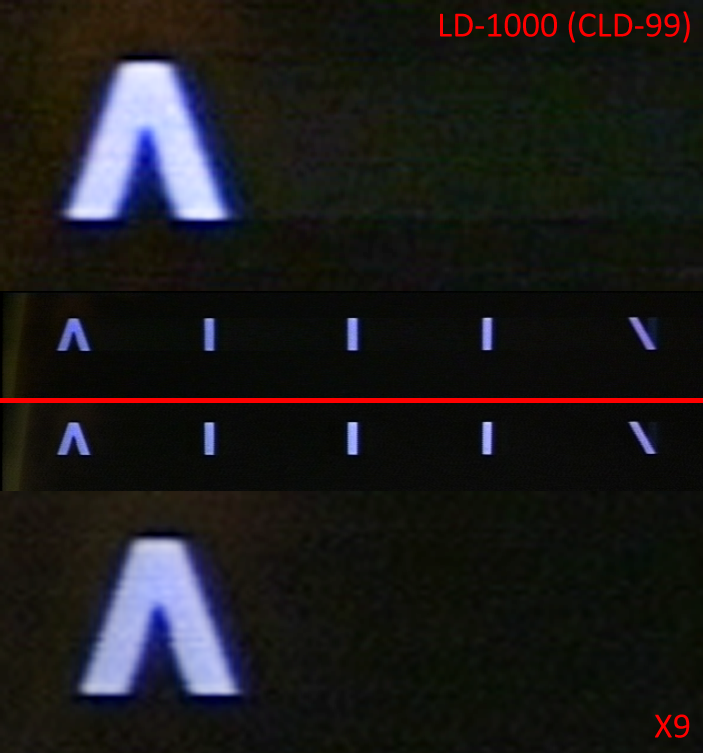CLV Smear is often mentioned when discussing laserdisc players. I’m currently in the process of writing an enormous article comparing various NTSC comb filters. As part of that I’ve been comparing my various Laserdisc players. After reading about CLV smear I wanted to explore it a bit more and confirm a few facts. I can best describe CLV smear as a tendency for high contrast areas to faintly smear to the right during playback of CLV discs on most Laserdisc players. I’ve seen this being attributed to high frequency boosting applied to the signal from CLV discs by players to increase high frequency response. This boosting is generally not applied to CAV discs (except at the very start) since the high frequency response is generally much better. So – Is CLV Smear real ? Does the player make a difference ? Is it baked into the disc ? Read on…
CLV Smear – Myth or Reality ?
Well the answers are pretty straightforward. By reputation the Pioneer HLD-X9 doesn’t exhibit CLV smear, and I am fortunate to have access to one. Additionally I managed to resurrect my Faroudja LD-1000, an upgraded Pioneer CLD-99, for comparison purposes. Both are fine players, with the LD-1000 often being described as the best US market player, while the HLD-X9 is arguably either the best or second best player Pioneer ever made. My capture chain, which I’ll cover in more detail later is Laserdisc Player -> S-video -> Leitch DPS-575 (TBC/ADC) -> SDI -> Blackmagic Hyperdeck -> SSD. Alien is an awesome film, and the AC-3 Laserdisc has a 70mm soundtrack that simply isn’t available on DVD or Blu-ray. The high contrast title sequence gives us an excellent showing of CLV smear in action.

CLV Smear – Above the CLD-99, below the HLD-X9. The zoomed ‘A”s have been constrast boosted to make the smear clearer. The frame may not be exact, but is very close.
Conclusions
It’s real. My Faroudja LD-1000 does it. I believe many other Pioneer players also exhibit it. I’ve read that the Panasonic LX-900 is smear-free, so may be worth a look. The Pioneer HLD-X9 is definately smear-free, but is a little awkward to buy outside Japan.
